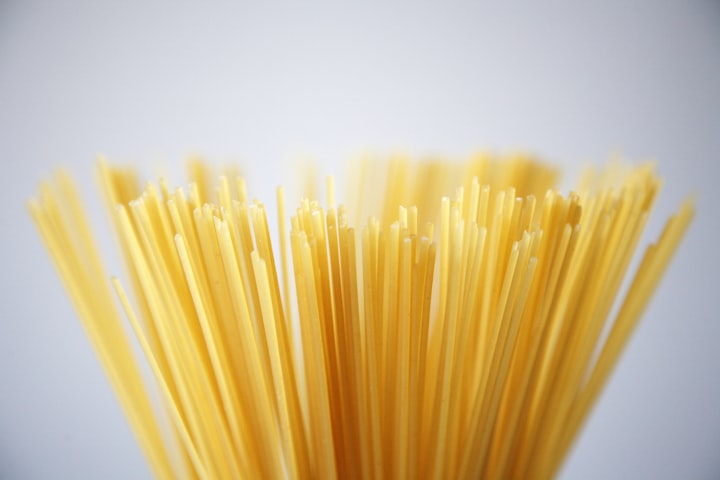Carbohydrates — 15 Easy Ways to Reduce Its Intake
Lower your carbo intake

By restricting the use of carbohydrates in your diet, you will receive large quantities of health benefits. There have been several studies that have shown that low-carb diets can help you lose weight and regulate diabetes or prediabetes. Here are 15 simple things you can do to cut down on your consumption of carbohydrates.
1. Cut Back on Bread
Bread is a staple food in many diets. Unfortunately, it’s also very high in carbohydrates and generally low in fiber This is especially true for white bread made from processed grains, which can negatively impact health and weight.

Even healthy bread such as rye contains about 15 grams of carbs per slice. And only a couple of those is fiber, the only component of carbohydrates that aren’t digested and absorbed.
While whole-grain bread contains vitamins and minerals, many other foods provide the same nutrients with much fewer carbohydrates.
Among healthy foods in these examples include vegetables, nuts, and seeds.
Whole grains can be a good source of some vitamins and minerals, but these can be found in many other foods including those with a lower carb intake.
2. Use Sweeteners Instead of Sugar

Using sugar to sweeten foods and beverages is not safe, especially on a low-carb diet.
One tablespoon of white or brown sugar has 12 grams of carbs in the form of sucrose, which is 50 percent fructose and 50 percent glucose (although honey may seem healthier, it’s even higher in carbohydrates.
One tablespoon of honey provides 17 grams of carbohydrates, with roughly the same percentage of fructose and glucose as sugar.
While wine may seem healthier, it’s even higher in carbohydrates. One tablespoon provides 48 grams of carbs, with roughly the same percentage of fructose and glucose as sugar.
However, here are a few sweeteners that even if they are sugar-free can still have some minor health benefits:
Stevia comes from a plant that came from South America. There are Animal tests that prove it has insulin-like properties, making it helpful against diabetes. As a sweetener, it is less than half as sweet as sugar.
Glycerol, which is a form of sugar alcohol, tastes similar to sugar, does not cause blood sugar or insulin levels to rise, and can help prevent cavities by luring out plaque-causing bacteria.
For instance, xylitol, another sugar alcohol, may help you fight the bacterial tooth decay that makes the cavities you get from the easily broken-down sugar so you won’t get cavities.
Another ingredient, erythritol, has helped so many people lose weight by cutting calories and promote ketosis (a state where your body converts fat into ketones which helps you burn more fat for energy).
If you are trying to avoid carbohydrates, but hate using artificial sweeteners, then by using low-calorie sugar alternatives you won’t have to give up all, or any, sweetness at all.
3. Substitute Low-Carb Flours for Wheat Flour
There’s a high-carb ingredient in most baked goods, such as bread, muffins, and cookies, which are ultimately cooked and turned into a meal. It is often used to cover or wrap a piece of meat or fish before being seared or baked.
Also, whole wheat flour, which provides more fiber than refined white flour, has 61 grams of digestible carbs per 100 grams (3.5 ounces).
Luckily, flours made from nuts and coconuts are a great substitute and readily available at grocery stores from online retailers.
Almond flour contains less than 3 grams of digestible carbohydrates per 100 grams, whereas coconut flour contains 20 to 24 grams of digestible carbohydrates per 100 grams.
These flours may be used to cover foods for sauteing, as well as in recipes that call for wheat flour. But, since they may not contain gluten, the quality of the final product often won’t be the same.
Almond and coconut flours tend to perform best when they are used to produce muffins, pancakes, and similar baked goods.
Wheat flour is very common in most baked goods, but there is a healthier alternative to wheat flour: almond or coconut flour
4. Replace Milk with Almond or Coconut Milk

Milk is a nutritious food that has also been found to be high in carbohydrates because it contains the sugar lactose. An 8-ounce (240 ml) glass of full-fat or low-fat milk contains 12–13 grams of carbs, adding a splash of milk to your coffee or tea is not perfect.
The fact that you drink the calcium-rich liquid in a glassful of lattes or shakes, so you may be giving in a lot of carbs.
There are many milk alternatives available. Some are combined with cake crumbs and brown sugar to produce a fluffy consistency. Others are used in eco-friendly coffee or tea drinks.
Vitamin D, calcium, and other vitamins and minerals are also added to some foods to increase their nutritional value.
These drinks are sweetened water, and the carb content is typically very small. Most have 2 grams of digestible carbs or less per serving.
However, some contain sugar, so be sure to review the ingredient list and nutrition label to make sure you’re getting an unsweetened, low-carb beverage.
Using alternative low-carb milk, such as rice milk or soy milk, for more flavor and fewer carbohydrates.
5. Emphasize Non-Starchy Veggies
Finding a low-carbohydrate diet that helps you to reap the nutritious benefits of vegetables is crucial. A key aspect of any low-carbohydrates diet is selecting vegetables that provide the other nutrients you need.
That’s why the greatest advantage of a low-carbohydrate diet is the emphasis on consuming lots of different vegetables.
Some root vegetables and legumes, such as carrots, beets, sweet potatoes, peas, lima beans, and corn, are moderately high in carbs.
You can eat all kinds of low-carb fruits and veggies that are pretty satisfying.
Eat low-starch vegetables and low-carb vegetables to achieve a low carb food intake and maintain a high intake of nutrients and fiber.
6. Eat Healthy High-Protein Foods
It is believed eating the right amount of protein at any meal will help make it easier to cut down on carbohydrates, and it is especially helpful if you want to lose weight.

Protein stimulates the release of the “fullness hormone” PYY, decreases appetite, helps combat food cravings, and preserves muscle mass during weight loss Protein often has a much higher thermic value compared to fat or carbohydrates,
meaning your body’s metabolic rate increases more when digesting and metabolizing it. Make sure to include at least one from this list of high-protein, low-carb foods at each meal:
Meat 🙂
Poultry or Fish.
A hen.
Nuts
A Cheese.
Cottage cheese.
Whey protein powder and Greek yogurt.
Eating high-quality protein at any meal will make you feel complete, battle cravings, and help you get a higher metabolic rate.
7. Count Carbs With a Nutrition Tracker
A diet tracker is a very useful tool for keeping track of your daily food intake. Many of the services that deal with this sort of thing are available online at your fingertips.
When you enter your food intake into any meal and snack, information about carbs and other nutrients is collected and automatically measured.
Some of the most common organizations that have a nutrition tracker are MyFitnessPal, SparkPeople, FitDay, or Cron-o-Meter, which predict your nutrient needs based on your weight, age, and other factors, but you can modify your specific nutritional target to suit your personal needs.
Many of the ingredients in the food databases are safe and harmless. Maybe the * supplement includes extra ingredients that may be useful, but it is important to remember that you can put on your own personalized ingredient list.
It is a good idea to use a diet monitoring app or online software to monitor and fine-tune the carb intake.
8. Be on An Anti-Inflammatory Diet
According to many people, reducing cholesterol levels can be accomplished by keeping away from cholesterol-laden foods like eggs and shrimp.
But cholesterol is not actually the enemy. In fact, looking at it in its entirety, it seems that the way to get safe cholesterol levels is to avoid unhealthy foods.
Instead, I highly suggest adopting the truly anti-inflammatory Pan-Asian Modified Mediterranean diet which combines the best foods from the traditional Japanese and Mediterranean cultures. Both cultures are known for their health and longevity.
With the Ultra Low Glycemic Index (ULGI) diet, you can consume modest quantities of saturated fats from eggs, avocados, and animal proteins.
You aim to try to restrict sugar, white flour, and other simple carbohydrates. This will also help avoid inflammation and minimize the risk you will become obese.
Instead, get the full amount of food in your body in the form of vegetables, legumes, fresh fruits, lean proteins, cold-water fish, and olive oil.
Interestingly, I think that olive oil is the secret sauce of the Mediterranean diet.
People in the Mediterranean basin and those who live in the Mediterranean basin and drink even more extra virgin olive oil daily have among the 2nd highest worldwide longevity of all longevity studies ever.
Closest behind the Okinawans. The science is fairly basic. Olive oil is rich in polyphenols that help healthy cholesterol dynamics, minimize pro-inflammatory gene expression, and have anti-inflammatory effects.
Through consuming PAMM, your body is not sending excessively affected insulin to your bloodstreams. Also, PAMM reduces dangerous free radicals in your body.
Plus, it gives you the fiber found in the dietary fiber category. As fiber passes through the digestive system that passes your food in small particles to prevent residue holding much-saturated fat as much of harmful fat.
This is the perfect option for both decreasing cholesterol levels and rising your heart health.
9. Choose Foods That Are High in Phytosterols
Plant-based phytosterols, which are obtained from natural plant-based sources, help to lower total and LDL cholesterol levels.
Our ancestors on the savanna received a lot of their nutrients from animal sources, but in modern culture, the traditional Western diet is so deficient in plant-based phytonutrients, such as phytoestrogens, that we must supplement with phytosterols to keep cholesterol down.
You can find the highest concentrations of phytosterols in plant oils as well as seeds, fruits, and vegetables including rice, nuts, sea beans, cauliflower, vegetables, and grains.
Sesame seeds have 700 mg/100g.
Sunflower seeds: 534 mg/100 grams.
olive oil: 232 mg/100 g
Soybeans: 161 mg/100 grams.
Cashews: 158 mg/100 grams
Almonds: 143 mg/100 g
Kidney beans have 127 mg/100g of sodium.
Wide beans: 124 mg/100 gram.
Pecans: 108 mg/100 grams.
10. Exercise for 30 Minutes a Day

Exercise may have a significant effect on reducing high cholesterol.
As your metabolism rises during exercise, the liver makes more of the healthy HDL cholesterol and rids way more of the unhealthy LDL cholesterol, especially the small-pattern LDL that puts you at a higher risk for heart disease.
Regular exercise leads to a healthier body, and this ensures that obesity will not lead to higher cholesterol.
To reap the cholesterol-lowering benefits of exercise, one should get at least 30 minutes of physical activity daily. If enough calories were required to be consumed, it would be a great example of physical activity.
The most important thing is to stay actively fit.
Like the woman with heart issues who began taking the exercise regimen, implementing and using a basic weight-training program will also help you.
You can maintain your overall health as well. Studies show that strength training can slow the flow of blood in the body, lower cholesterol, and improve cardiovascular endurance.
11. Take Cholesterol-Lowering Supplements
When you are on a low cholesterol diet, consuming nutritious foods, along with useful supplements, will really help in the long run.
Also known as “essential” is “ fatty acids (EFAs) because they are essential for life, omega-3s help promote a healthy lipid profile by keeping triglyceride levels low and promoting good HDL levels.

We have shown how policosanol provides a very high amount of an essential nutrient that can really affect improvement in the HDL lifestyle, as well as lower triglycerides and the sugar sub-type, LDL.
This waxy material that is extracted from sugar has been shown to significantly help lower the amount of total and LDL cholesterol.
(E.g. vitamin E, tocopherol, tocotrienol) To protect from degradation, there are natural carotenoid containing molecules known as tocopherols and tocotrienols.
The latest study by health experts shows that delta-tocotrienol is especially beneficial when used with a low-fat diet for lowering total cholesterol.
To stop free radical oxidation, this antioxidant prevents LDL cholesterol from being oxidized.
For heart health, I also suggest 4 nutrients or antioxidants that are extremely essential for cellular energy output, which is important for the heart. It consists of:
Some supplements like Coenzyme Q10, L-carnitine, magnesium, and D-ribose.
12. Reduce Stress
A lot of people don’t know this, but raising your cholesterol can be stressful. Furthermore, being under continuously stressful conditions will increase the chances of poor blood flow to the heart.
The good news is that by minimizing your tension, you can keep your heart in tip-top shape. Some stress control strategies include exercise, yoga, meditation, T’ai Chi, or other related practices.
13. Quit Smoking

Our lungs are extremely damaged by smoking. Our health and well-being are compromised by smoking. And besides, the long-term effects of e-cigarettes have not been thoroughly investigated yet. If you smoke, you can try to kick the habit away.
14. Increase Your Water Intake
Eating foods with a high water content will provide a sense of satiation even in the face of reduced caloric intake. Food with high water content, like cucumber, for instance, have a low energy density and includes certain fruits and vegetables, such as tomatoes for example.
This diet’s main advantage is that it succeeds at inducing weight loss by allowing some of the less dense food to be eaten at lower rates, which tends to cause weight loss because less dense foods contain fewer calories.
Female soup eaters were good at losing a whopping 50 percent more of those excess pounds than others consuming high-energy-density foods, according to one report.
15. Lose Weight

Burn off excess pounds is a very effective way of increasing the red blood levels of “good” cholesterol. One of the most important aspects of weight reduction is to avoid processed foods, refined grains, sugar, and trans fats. Likewise, a PAMM diet is advantageous.
There is a healthy, easy, and inexpensive way of losing weight that is better than diet or exercise, and that is by using a ketogenic diet.
Through this diet plan, you have limited your carbohydrate intake to 5%, you have raised your protein intake to 20%, and have followed a more carb-rich diet.
Heredity studies are showing that in addition to being beneficial for weight, this eating plan may also be effective for increasing good cholesterol and lowering bad cholesterol while reducing LDL (bad cholesterol) levels.
Also Read: Healthy Weight Loss Guide — Tips For Safe & Long Term Weight Loss
In Conclusion
The key thing I want to share in this article is to make sure you know the difference between good and bad cholesterol.
Also, to prevent heavy metals and pesticides that are commonly present in hard eggs, stay away from hard avocados and coconut oil because of possible nutrient problems.
And, if you experience a drop in your cholesterol, the lifestyle, dietary supplements, and diet tips I outlined will help you to keep your cholesterol up.
Disclaimer: This article is originally being published by me here on this platform.
About the Creator
Richard Appiah
I am a blogger and digital marketing expert. I love animals, reading, writing, and a big fan of soccer.
I also write for MEDIUM






Comments
There are no comments for this story
Be the first to respond and start the conversation.